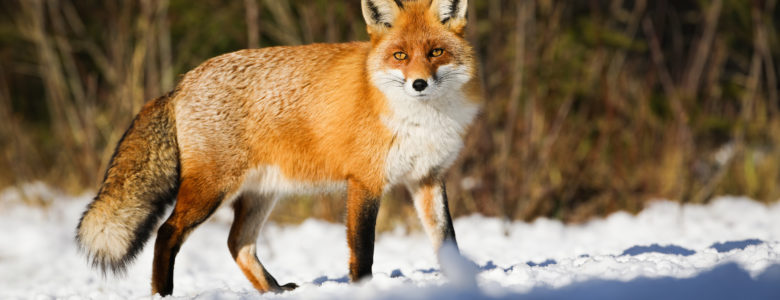Eagle Mountain is a wild-urban interface.
The truth is, and this should be no surprise, the community has wild canids living within city limits. Likely, there’s an influx of migration and emigration of coyotes and red foxes moving through the city throughout the year.
It’s important that residents are aware of these and, like any wildlife, stay clear and give them space.
Eagle Mountain has three species of wild canids that call the city home. First, and likely the most common, is the red fox or Vulpes, vulpes. It’s debatable as to whether or not the red fox is native to Utah. The state does not consider them a native or protected species. They are not included in Utah’s Wildlife Action Plan.
Given that they are not a protected species, they can be taken any time during the year. The red fox has benefited greatly with the urbanization of Utah and North America. They are very adaptable and proficient hunters and persist well in the wild-urban interface.
There are likely several mated pairs located within City limits. More exist closer to Utah Lake near Lehi and Saratoga Springs.
They typically become more visible during the fall and winter months as food sources become scarcer and their breeding season approaches. They can quickly expand their population where prey is available, and larger canids are absent.
It’s important to note, because many of our native small mammals and birds didn’t evolve alongside the red fox, that they can impact populations for certain wildlife and can cause localized extinctions.
In the early 2000s, the red fox was almost single-handedly responsible for low populations of the Greater sage-grouse around Strawberry Valley in Wasatch County.
Second, is the coyote or Canis latrans. While native to Utah and North America, the coyote is another non-protected species of wildlife in Utah not mentioned in the WAP.
Coyotes are commonly observed within the city, and Eagle Mountain likely has several mated pairs that successfully raise pups each year.
The most important thing to know about coyotes is this: In the absence of hunting, and/or continual harassment of man, they become habituated quickly to the urban-wild interface and have no real fear of man.
While they are exciting to see to some, and always make cool sounds during certain parts of the day, they can cause problems with human health and safety, as well as the safety of kids and pets.
Coyotes can be very protective of their den — especially if residents venture into their denning territory with pets.
Just like the red fox, Coyotes will take advantage of left-out garbage, garbage in the trash bins, and dog or cat food left in the back yard. Once they find these sources of food, they will continue to use them and become less fearful of humans, dogs and loud noises.
Third is the kit fox or (Vulpes, macrotis). The kit fox is only about the size of a house cat; however, these are a protected species in Utah and more information can be gleaned about them from the WAP (pg. 275).
What is known about the kit fox is that it is native, nocturnal, it is found in desert habitats in Utah and found in flat desert areas throughout the Great Basin ecoregion. They feed primarily on small rodents (deer mice Peromyscus, maniculatus and Ord’s kangaroo rat Dipodomys, ordii ) that are abundant in Cedar Valley.
They likely have established dens in the city along major washes, or in the undeveloped areas to the south and west portions of the city.
Here’s the take-home message about wild canids in Eagle Mountain City. Like all wild animals, coyotes and foxes are still wild:
1-PLEASE do not go out of your way to feed them,
2-TRY to not leave your food garbage and or pet food around your house and especially don’t leave it out overnight,
3-DO NOT try to make friends with them and keep them as pets just because they are cute and cuddly. Stay clear, give them space report any serious issues or problems to the city.


